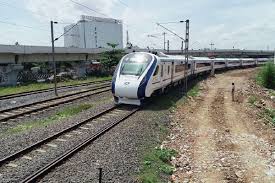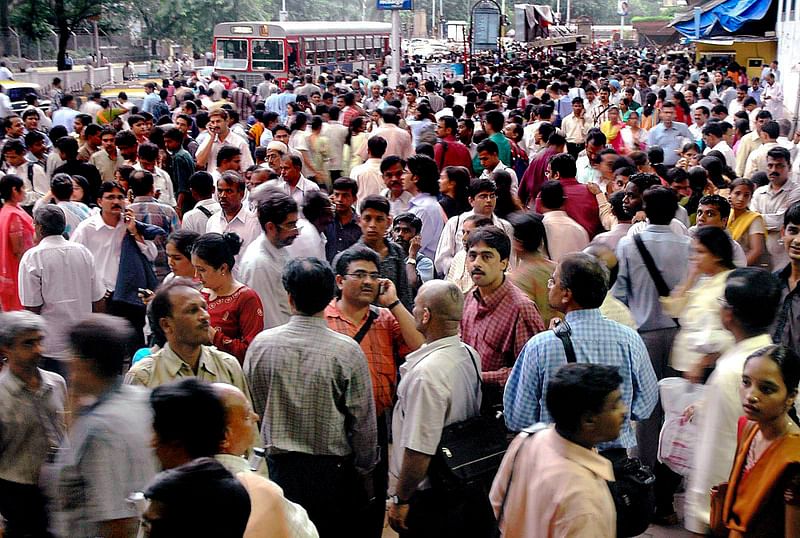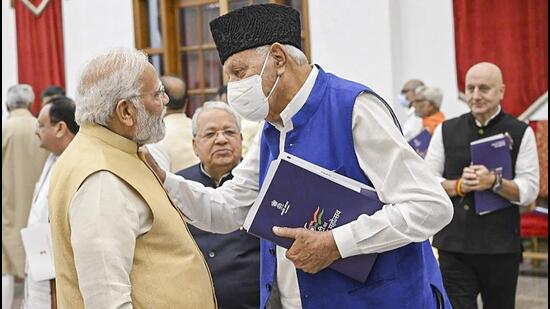- Latest in Politics
- Hits: 274
The Vande Bharat !

When the Prime Minister inaugurated the latest upgraded version of Vande Bharat train recently, A senior railway official proudly briefed the reporters about the “superior” features of the train, which would provide passengers with an “aircraft-like travelling experience”, including reclining seats, automatic fire sensors, CCTV cameras, Wi-fi and claimed that India has made a huge leap into the future of mass transportation.
At the flagging-off ceremony, the Prime Minister even went on to say that ;
“People who are used to travelling on flights will prefer the Vande Bharat now”.
These are India’s first indigenous semi-high-speed trains under the ‘Make in India’ initiative and surely, we all must be proud of our engineers and technicians for this feat.
However, in our politically vitiated society where everything is seen from the prism of politics, we need to look at this achievement objectively.
Train Vis a Vis Flight.
One. Travelling by any train has some advantages over flying. Trains take you straight into the heart of the city. So, you reach home or the work place, very soon after getting down from the train. Whereas, the airports are far away and getting out of the airport, collecting the luggage itself consumes an hour almost.
Two. You don’t have to reach a train station hours before to check-in - drop off bags - clear security and wait in queue to board. So, there is surely a Time advantage.
Three. Trains are usually a lot cheaper.
These advantages have often been overlooked and people preferred flying because ;
Alpha . the trains are slow and often run late. Usually, an Indian Express trains take anything from 8-12 hours to cover approx 700-800 kms of distance, whereas the flight would take less than two hours to cover the same distance.
Bravo. The trains and railway stations are dirty, crowdy and there are poor amenities on board. An inter-city train such as, the Shatabdi Express was a hit because it ensured all this; cleanliness and better amenities and by and large they ran on time. But over a period of time, these Shatabdis seem to have deteriorated significantly and often run late, thereby compelling people to prefer flights over trains.
Although, the Indian Railways has seen somewhat of a turnaround in the past few years and there are quite a few achievements for which the current govt needs to be applauded, one, there are no unmanned crossings anymore. second, we have in last 4-5 years hardly any major accident. Lastly, the cleanliness at many railway stations has improved.
However, despite all the actions taken including the bio toilets the majority trains after travelling few odd kms from the starting station become dirty, often unruly and are still in a habit of running late.
CAG Report.
The CAG report tabled in Parliament highlighted two very important aspects of Indian trains which bring to the fore that we are still far far behind achieving efficiency;
One. Indian Railways despite investing ₹ 2.5 lakh crore on track infrastructure during 2008- 19 have failed to improve on the mobility outcomes.
Two. "Mission Raftaar" introduced in 2016-17 targeted an average speed of 50 kmph for mail/express and 75 kmph for freight trains by 2021-22. The average observed speed of Mail/Express and freight trains until 2019-20 was, however, still around 50.6 Kmph and 23.6 Kmph, respectively. This implies that perhaps the money that was spent on upgrading the infrastructure has not been utlised properly and so it has failed to achieve the desired impact.
Three. Out of 478 superfast (SF) trains, the scheduled speed of 123 SF trains (26 per cent) was less than the specified speed of 55 Kmph. Indian Railways has no guaranteed delivery time for goods consignment.
Four. Implementation of Dedicated Freight Corridor (DFC) Project DFCCIL could not fully utilize the World Bank fund resulting in payment of avoidable commitment charges of ₹ 16 crore. No maintenance facility was created by the DFCCIL. Out of total 4,844 Route Km, only 2,346 Route Km (48 per cent) of feeder routes were upgraded till November 2020.
Examining Vande Bharat
In view of this report we need to critically examine the features of Vande Bharat ;
One. The average speed of the train, on various routes, as reported, has been approx. 81km per hour, implying it’s a waste of money because the tracks do not allow these trains to run at a speed for which they are designed. It’s like someone who is residing in Chandni chowk and has an office near Old railway station has bought a Ferrari to commute.
Two. In order to show that these trains are faster, the officials have tweaked with the stoppage times and number of stoppages. For instance, The Vande Bharat Express departs from Chandigarh at 3.30pm hrs and takes 2 hrs and 55 mins to reach New Delhi with Four stoppages whereas the Shatabadi Express covers the same distance in 3 hrs and 22 mins, a saving of mere 27 minutes.
We can safely assume that in few years’ time even the number of stoppages of these Vande bharat trains would increase like it happened with Shatabdi. For instance, Shatabdi running from Bhopal to New Delhi, in its initial days, barely had 3-4 stoppages whereas now it has almost nine.
In view of the above, therefore, the critics are not very wrong and they are justified in their criticism.
Conclusion.
Notwithstanding with what the critics say, I feel;
One. Construction of rail tracks is a long and tedious process and one can not wait for so long - to first develop the tracks and then bring in new technology trains, that can run faster on those newly laid tracks. This would take hell of a long time.
Two. So, in view of the above handicap, one can first roll out the high-speed trains and then gradually work on the track development.
Three. This would rather help the technicians to keep upgrading the technology and keep rolling out better coaches and engines so that when the high-speed tracks are made available, you will have better and faster trains readily available to make use of those tracks.
Four, someone travelling from Chandigarh to Delhi might skip the flight and prefer to board Vande Bharat but surely not for longer distances.
In order to draw an analogy, lets look at the automobile sector, What would we have preferred in 90s?
Continue driving fiat and ambassador till the improvement of roads and highways or switching over to faster and better technology Maruti Suzuki cars and wait for the roads to develop. The approach that we took in 90s, has helped us to upgrade the technology of the cars when better highways came up in due course of time.
Lastly, Lets accept that Vande Bharat is an upgraded version of Shatabdi Express which has been introduced, in all probability, with an aim, that Shatabdi dies its own natural death.
However, what will be interesting to see is ; The condition of these VANDE BHARATS , after a decade or so ? But the fact of the matter is Can we blame Madhav Rao Scindia and the then Govt for the plight of Shatabdis.
Note; You can also read this article on TOI Blogs. https://timesofindia.indiatimes.com/readersblog/indiaasiseeit/vande-bharat-53085/
Add a comment





